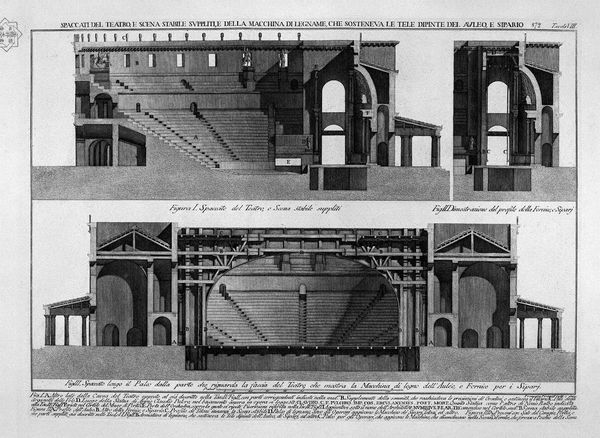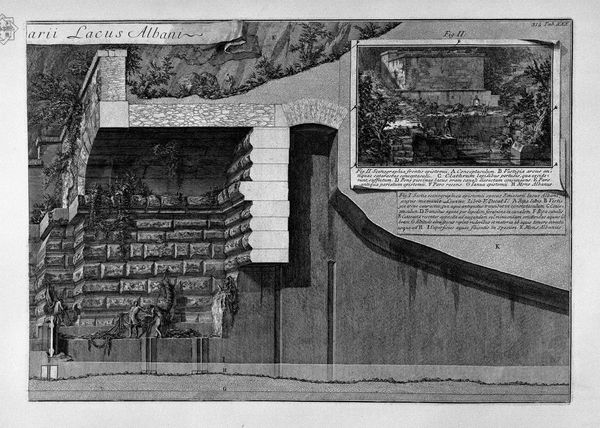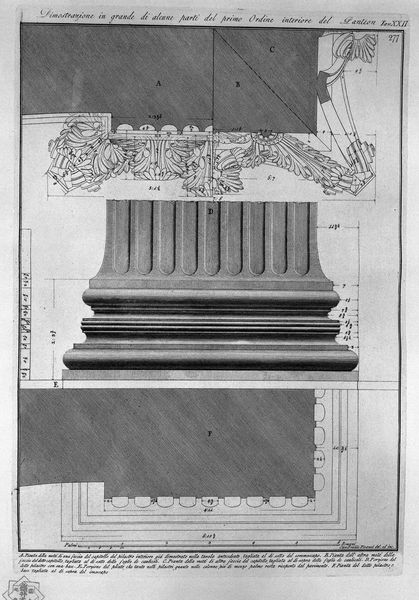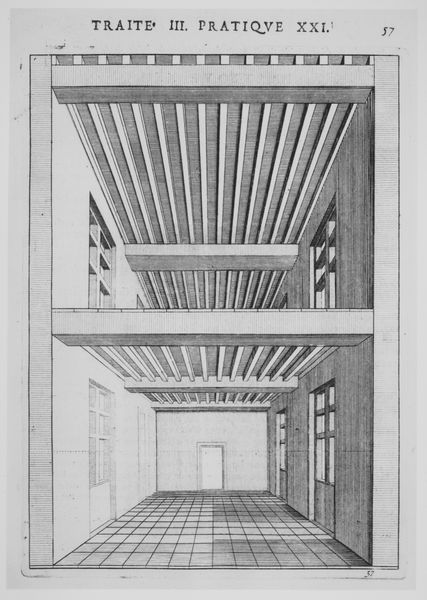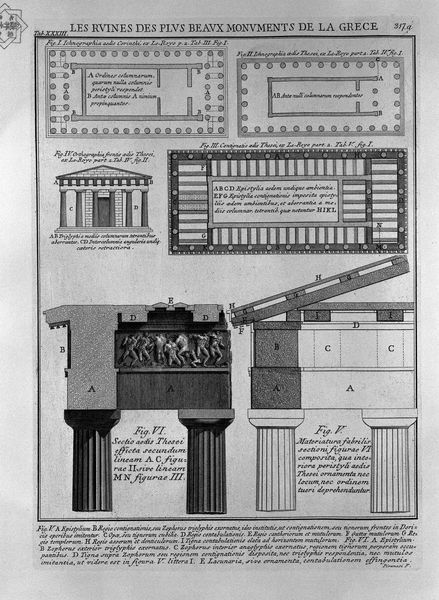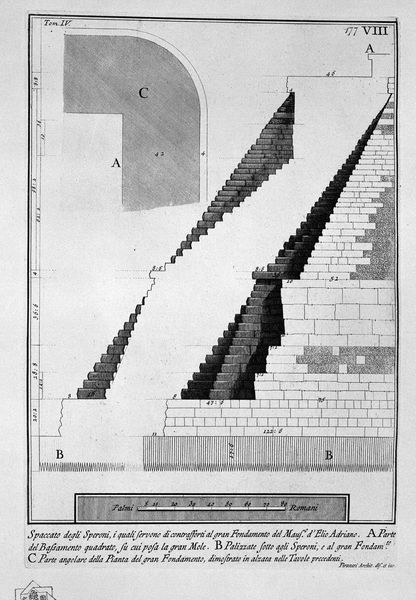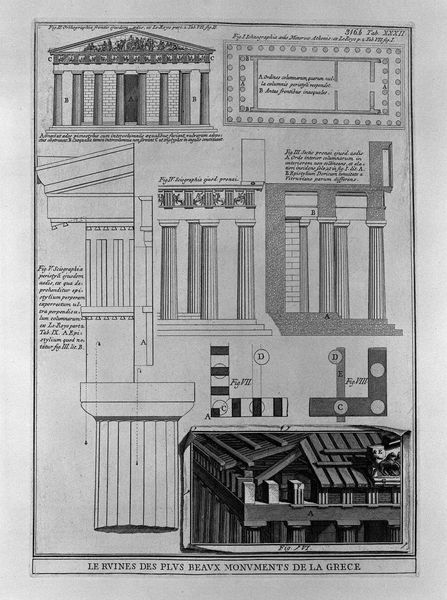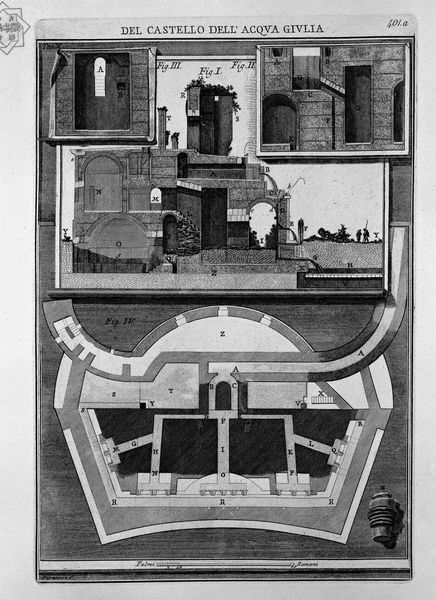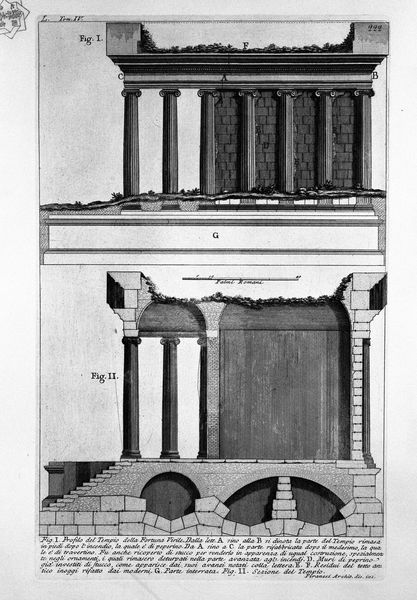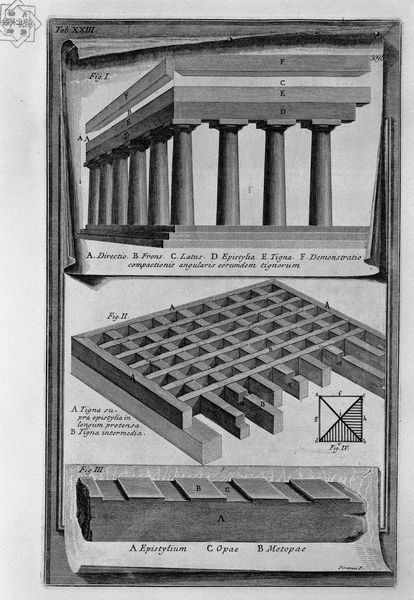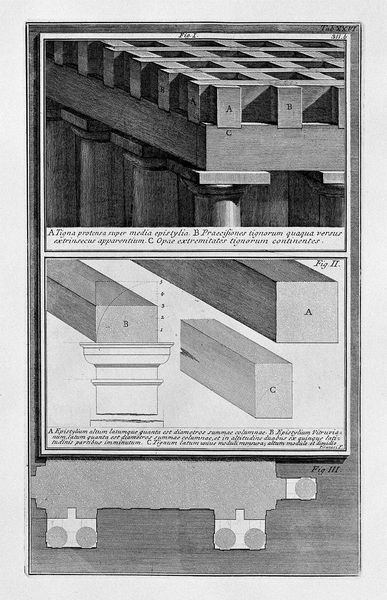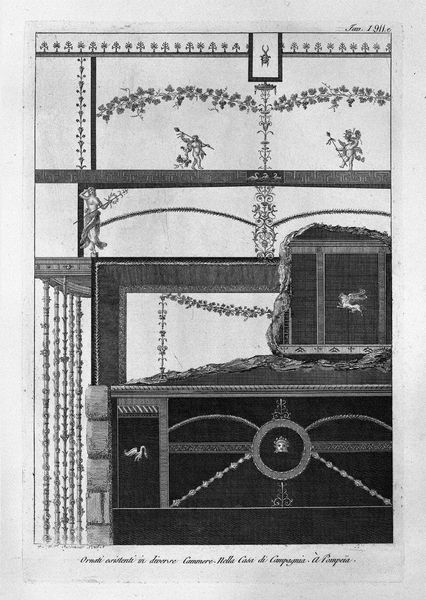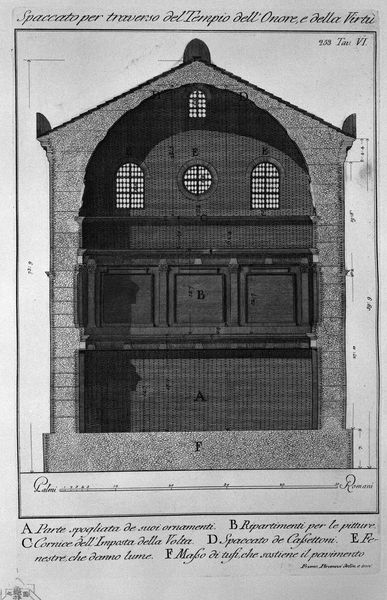
drawing, print, engraving, architecture
#
drawing
#
neoclacissism
# print
#
classical-realism
#
perspective
#
geometric
#
architectural drawing
#
architecture drawing
#
engraving
#
architecture
Copyright: Public domain
Editor: Here we have Giovanni Battista Piranesi’s "Another perspective view and details of the Doric Temple," an engraving. It feels quite technical, almost like an architectural blueprint. There's a real emphasis on structure, with these precise lines and labeled sections. How would you interpret this work? Curator: I see Piranesi using the Doric temple, a symbol of classical authority, as a stage for exploring Enlightenment ideals about knowledge and power. This wasn't just about accurate representation; it was about cataloging, dissecting, and ultimately controlling the past. What do you think the act of meticulously documenting architecture does for how society views its cultural heritage? Editor: That's interesting, the idea of control. I guess by breaking it down into digestible parts, he makes it seem less imposing and more accessible for study. But do you think there's a risk of losing the temple’s original context and cultural significance by focusing so much on its structure? Curator: Absolutely, and that tension is key. Piranesi lived in a time when the Grand Tour fueled interest in classical ruins, but also arguably commercialized them. These prints could be seen as both celebrating and commodifying classical architecture for an expanding market. Do you see any indications in the print itself of this tension? Editor: Perhaps the highly detailed yet somewhat cold and sterile depiction contrasts with the grandeur associated with these temples. It almost feels like a scientific specimen. Curator: Precisely. By understanding the social context of these prints, we can appreciate Piranesi’s contribution and engage in critical discussion about cultural appropriation and the public role of art. Editor: I hadn't considered the social and commercial implications so directly. Now I see this image as more than just an architectural study; it's a product of its time, reflecting the complex relationship between history, art, and society. Curator: And hopefully it makes you consider what societal impact this image has had as a work of art, beyond its architectural elements.
Comments
No comments
Be the first to comment and join the conversation on the ultimate creative platform.
